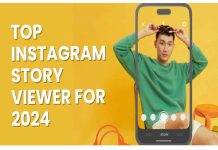Resting on their laurels can be a death sentence for organisations in today’s uber-competitive landscape.
Businesses should always be looking for new ways to reinvigorate themselves to get ahead of the competition, and this includes their marketing efforts.
Key to this is digital marketing, which according to industry experts Pitch, encompasses four main subsets of marketing. These are content marketing, search engine optimisation, search engine marketing and social media marketing.
Digital marketing offers numerous benefits to businesses, from great return on investment and trackable, measurable results, to a global reach and enhanced personalisation.
With that in mind, what are some of the main digital marketing trends that companies should take on board during 2024?
Table of Contents
Podcast marketing
Almost a fifth of Brits listen to podcasts every single day, and alongside popular pop, culture podcasts are an increasing number of branded podcasts, from Slack’s Variety Pack to Inside Trader Joe’s.
The success of these examples demonstrates that it’s not just viable but incredibly beneficial for businesses to dip their toe into the world of podcasts, and we’re predicting that more companies will begin to realise this in 2024.
Podcast marketing offers companies some benefits, including the opportunity to demonstrate thought leadership in their given field, engage directly with their target audiences, and increase brand awareness.
Businesses don’t necessarily need to produce their podcasts either. For instance, business spokespeople could feature as guests on relevant podcasts by other producers, or they could place their products or services as adverts on different pods.
Native advertising
A good user experience (UX) is vitally important to digital marketing success. Without this, users are less likely to respond positively to marketing efforts.
Online advertising often jeopardises the digital user experience — many adverts are incredibly intrusive and annoying, something that leads 42.7% of people on the internet to use ad blockers.
So what’s the solution to this? The answer might just be native advertising, which is advertising that fits the look, feel, and function of the digital platform on which it’s published.
It’s present, but it doesn’t ruin the UX like advertising often can, so it’s no surprise that native ads have 53% higher viewability than other forms of digital advertising.
Many brands have utilised native advertising to great success in recent times and, with spending on it increasing each year, don’t be surprised to see native advertising fully take off in 2024.
The metaverse
Metaverses have been around for some time now, but they received renewed attention with Mark Zuckerberg’s Meta metaverse announcement in 2021.
As explained in Forbes, “metaverses are “a combination of the virtual reality and mixed reality worlds accessed through a browser or headset, which allows people to have real-time interactions and experiences across distance.”
Some of the main metaverse platforms include Roblox, Minecraft and Fortnite, which have over 400 million users between them.
As more and more people join metaverses like these, the opportunities for marketers increase. Many companies are already looking towards metaverse marketing, with a great case in point being Ikea.
The Swedish furniture giant enables people to view products in 3D and true to scale in their home via its metaverse offering: Place. Another is Gucci, which created the Gucci Garden in Roblox back in 2024.
This was a virtual experience simulating the Gucci Garden Archetypes in Florence, Italy, that allowed users to exclusive, limited-edition branded avatar items.
Although metaverse marketing is very much in its infancy, brands that get ahead of the game now can reap the rewards of this technology in the years to come.














